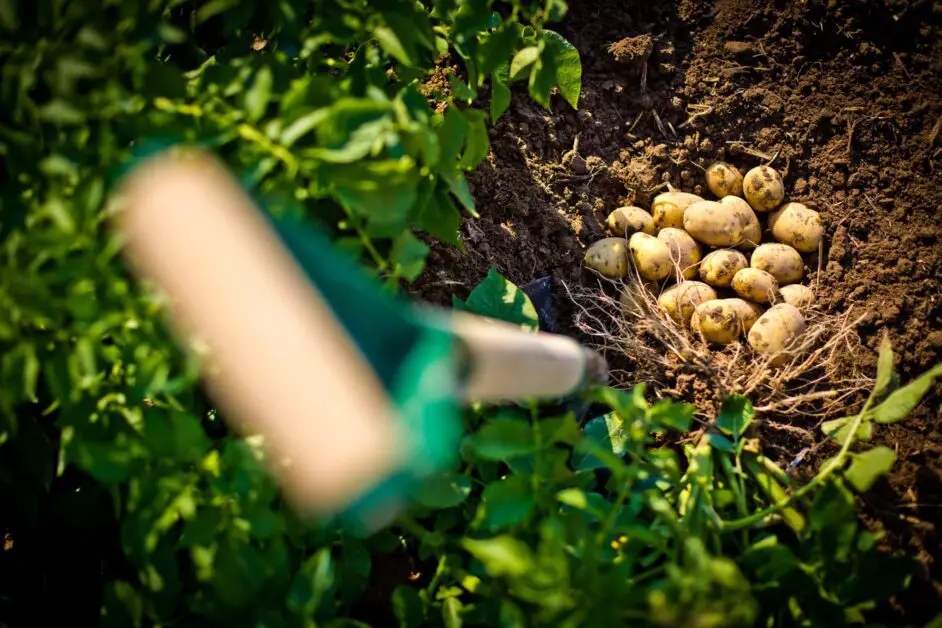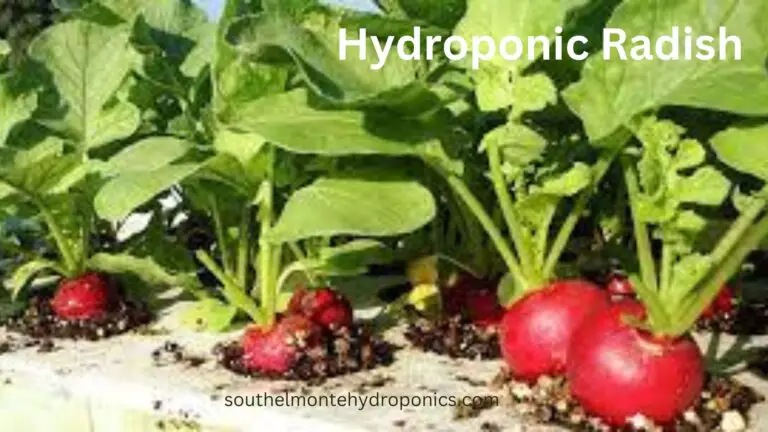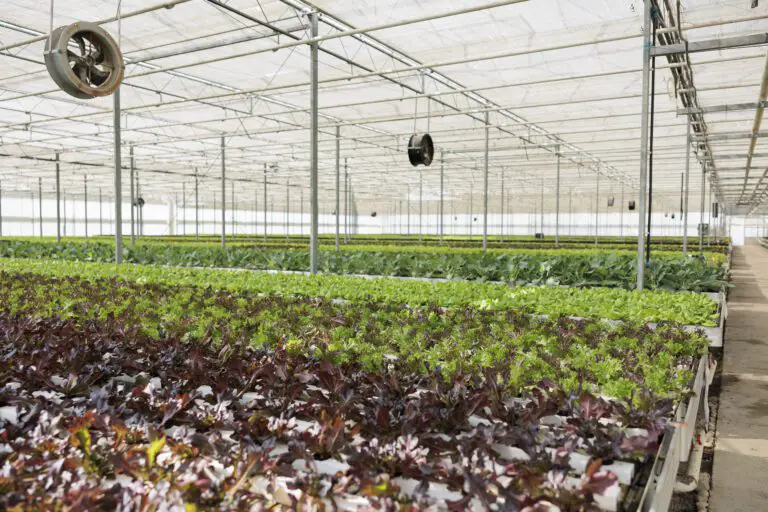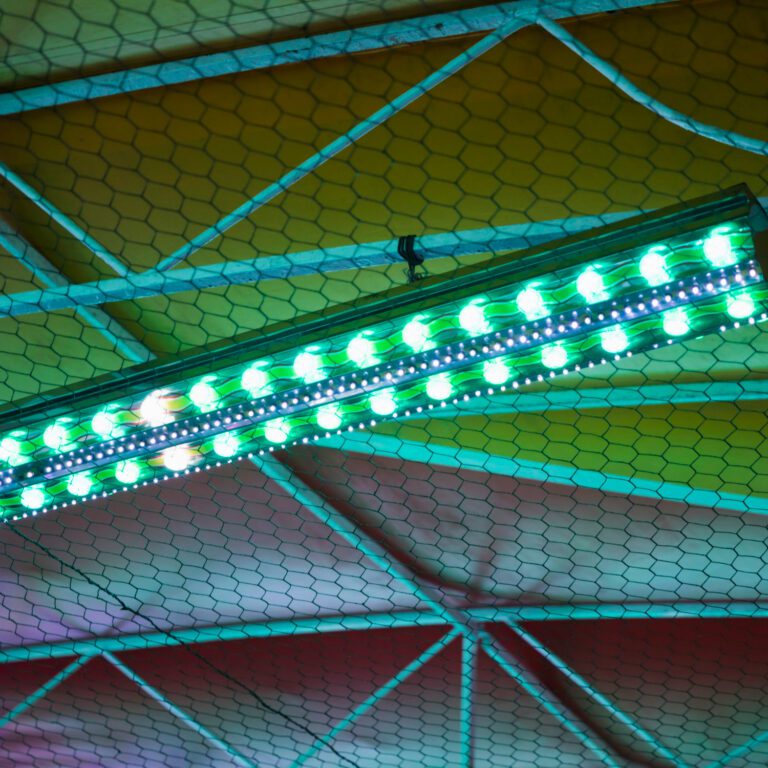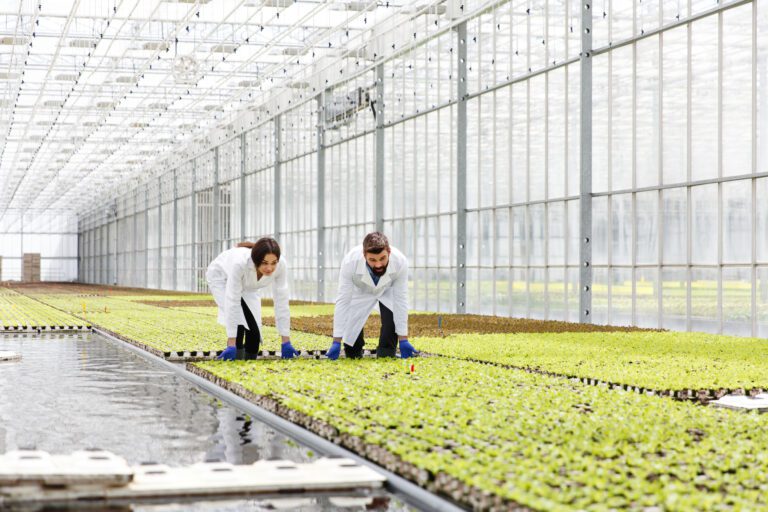A Step-by-Step Guide to Setting Up Your Own Hydroponic Potato System
Table of Contents
Understanding the Basics of Hydroponics for Potato Cultivation
Hydroponics is an innovative method of cultivating plants without the use of soil, utilizing a nutrient-rich solution instead. This technique has gained popularity among gardening enthusiasts, allowing them to grow a wide variety of plants in a controlled environment. When it comes to potato cultivation, hydroponics offers several advantages over traditional soil-based methods.
One of the key benefits of hydroponics for growing potatoes is the ability to optimize the nutrient levels provided to the plants. By directly supplying the roots with a nutrient solution, growers can ensure that the plants receive all the essential elements required for their growth and development. This precise control over nutrient supply allows for better nutrient uptake and results in healthier and more robust potato plants. Additionally, the absence of soil reduces the risk of soil-borne diseases, pests, and weeds, minimizing the need for chemical pesticides and herbicides.
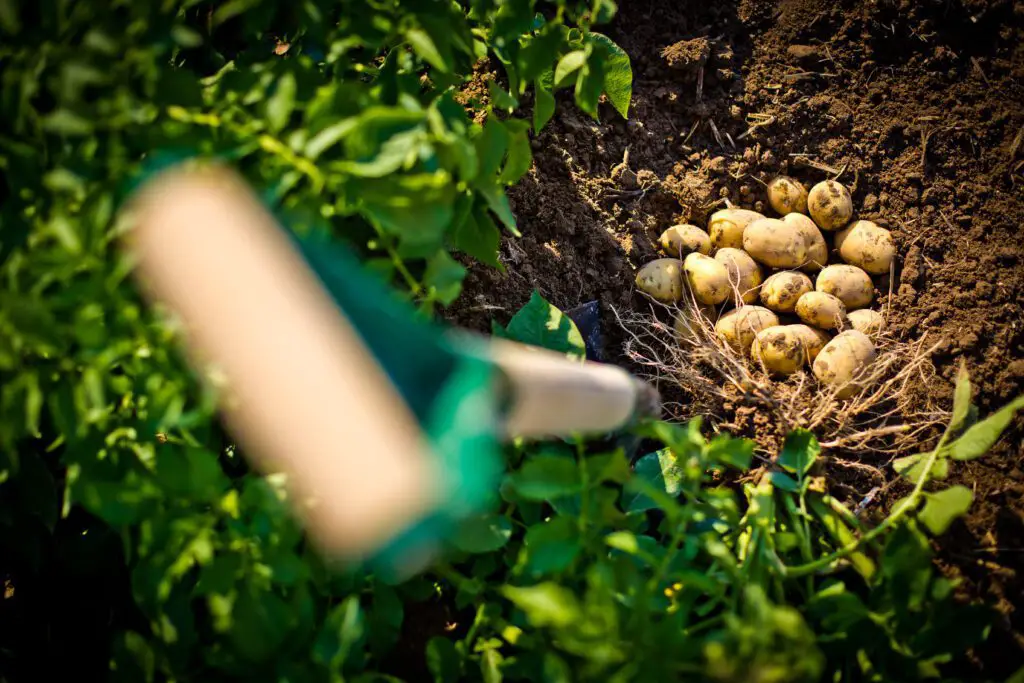
Another advantage of hydroponic potato cultivation is the efficient use of space and water. With traditional soil-based methods, potatoes require large amounts of land and water to grow successfully. However, in a hydroponic system, the plants can be vertically stacked, maximizing space utilization and allowing for higher yields in a smaller area. Furthermore, hydroponics uses water more efficiently, with the nutrient solution recirculating through the system, minimizing water consumption and reducing the environmental impact.
By harnessing the potential of hydroponics, gardeners can enjoy a bountiful harvest of homegrown potatoes while minimizing the challenges associated with traditional soil-based cultivation methods. In the following sections, we will delve deeper into various aspects of hydroponic potato cultivation, from selecting the appropriate hydroponic system to managing pests and diseases, providing you with the knowledge and tools necessary for a successful and rewarding potato growing experience.
Selecting the Right Hydroponic System for Growing Potatoes
When it comes to growing potatoes using a hydroponic system, selecting the right setup is crucial for successful cultivation. With a range of options available, it’s important to consider your specific needs and requirements.
One popular choice for growing potatoes hydroponically is the nutrient film technique (NFT) system. This system involves a continuous film of nutrient-rich water flowing over the plant roots, providing them with a constant supply of nutrients. NFT systems are highly efficient in terms of water and nutrient usage and are suitable for growing potatoes due to their ability to support larger plants. However, it’s essential to ensure a well-maintained flow and prevent any blockages that could disrupt the nutrient delivery.
Another option is the ebb and flow system, also known as flood and drain. In this system, a container or tray is periodically flooded with nutrient solution, which is then drained away. This cycle allows the roots to access the nutrients while keeping them oxygenated during the drainage phase. Ebb and flow systems are relatively easy to set up and manage, making them suitable for beginners in hydroponic potato cultivation.
When selecting a hydroponic system for growing potatoes, it’s crucial to consider factors such as space availability, budget, and your level of experience. Each system has its advantages and limitations, so choose one that aligns with your specific needs and goals. By selecting the right system, you’ll be on your way to cultivating healthy and abundant hydroponic potatoes.
Choosing the Ideal Location for Setting Up Your Hydroponic Potato System
Choosing the ideal location for setting up your hydroponic potato system is crucial for the success of your cultivation venture. Several factors need to be considered to ensure optimum growth and yield.
Firstly, it is important to select a location that receives ample sunlight. Potatoes require at least six hours of direct sunlight each day to thrive. Therefore, choose a spot in your garden or indoor space that offers the maximum exposure to sunlight. This will ensure that the plants receive the necessary energy for photosynthesis, resulting in robust growth and healthy potato tubers.
In addition to sunlight, the location should also have good air circulation. Proper ventilation helps prevent the buildup of moisture and discourages the growth of fungus and other diseases. An area with sufficient air movement will also aid in pollination and the exchange of gases, promoting overall plant health.

Lastly, consider the accessibility of the location. Ensure that it is convenient for you to monitor and maintain your hydroponic system regularly. Easy access will facilitate tasks such as watering, nutrient monitoring, and pest control, making it more manageable to provide the care and attention your potato plants need.
By carefully selecting a location that provides ample sunlight, good air circulation, and easy access, you are setting the foundation for a successful hydroponic potato cultivation system. These factors, when combined with appropriate hydroponic techniques and attention to detail, will increase your chances of a bountiful harvest of fresh and delicious homegrown potatoes.
Preparing the Required Materials and Tools for Hydroponic Potato Cultivation
When it comes to preparing the required materials and tools for hydroponic potato cultivation, there are a few key items that you’ll need to have on hand. Firstly, you’ll need a suitable container or system to house your hydroponic setup. This can range from a simple bucket or tray to more complex systems such as vertical towers or nutrient film technique (NFT) systems. The choice of system will depend on factors such as available space, budget, and personal preference.
Next, you’ll need a reliable light source to provide the essential rays for photosynthesis. LED grow lights are a popular choice for hydroponics due to their energy efficiency and ability to provide the correct spectrum of light for plant growth. Additionally, you’ll need a timer to regulate the light cycle and ensure that your potato plants receive the right balance of light and darkness.
In terms of tools, a pH meter is a must-have for monitoring and adjusting the acidity levels in your hydroponic system. Maintaining the correct pH range is crucial for nutrient uptake and overall plant health. Additionally, you’ll need a set of basic gardening tools such as a small shovel or trowel for transplanting and a pair of pruning shears for trimming and training the potato plants as they grow.
This table outlines the essential materials and tools required for successful hydroponic potato cultivation:
| Category | Materials/Tools | Description |
|---|---|---|
| Growing System | Hydroponic containers | Containers to hold nutrient solution and growing medium |
| Net pots or baskets | Hold potatoes in the growing medium | |
| Growing medium (perlite, coco coir, etc.) | Provides support and aeration for root growth | |
| Nutrient Solution | Hydroponic nutrient solution | Specifically formulated for potato growth |
| pH and EC meters | Monitor and adjust nutrient solution parameters | |
| pH up/down solutions | Adjust pH levels of the nutrient solution | |
| Equipment | Submersible water pump | Circulates and aerates the nutrient solution |
| Grow lights (if growing indoors) | Provides necessary light for potato growth | |
| Thermometer and hygrometer | Monitors temperature and humidity levels | |
| Planting Material | Seed potatoes | Disease-free, healthy potato tubers for planting |
| Maintenance Tools | Pruning shears | Trimming roots or removing dead foliage |
| pH calibration solutions | Ensures accuracy of pH meters | |
| Cleaning supplies (brushes, sponges, etc.) | Maintain cleanliness of equipment and containers |
By ensuring that you have these essential materials and tools in place before starting your hydroponic potato cultivation journey, you’ll be well-equipped to create an optimal growing environment for your plants. With a solid foundation, you’ll be able to move forward with confidence and set yourself up for success in your hydroponic potato venture.
Building and Setting Up the Hydroponic Structure for Potato Growth
Building and setting up the hydroponic structure for potato growth is a critical step in ensuring the success of your hydroponic potato cultivation. The first thing you need to consider is the type of system that will best suit your needs. There are several options available, including nutrient film technique (NFT), deep water culture (DWC), and ebb and flow systems. Each system has its advantages and disadvantages, so it’s important to research and choose the one that aligns with your specific requirements.
Once you have chosen the hydroponic system, you need to select an ideal location for setting it up. Factors such as access to natural light, temperature control, and convenience should be taken into consideration. A greenhouse or a dedicated indoor space with ample natural light is ideal for potato cultivation. It’s important to ensure that the location provides a stable environment with proper ventilation and temperature control mechanisms in place.
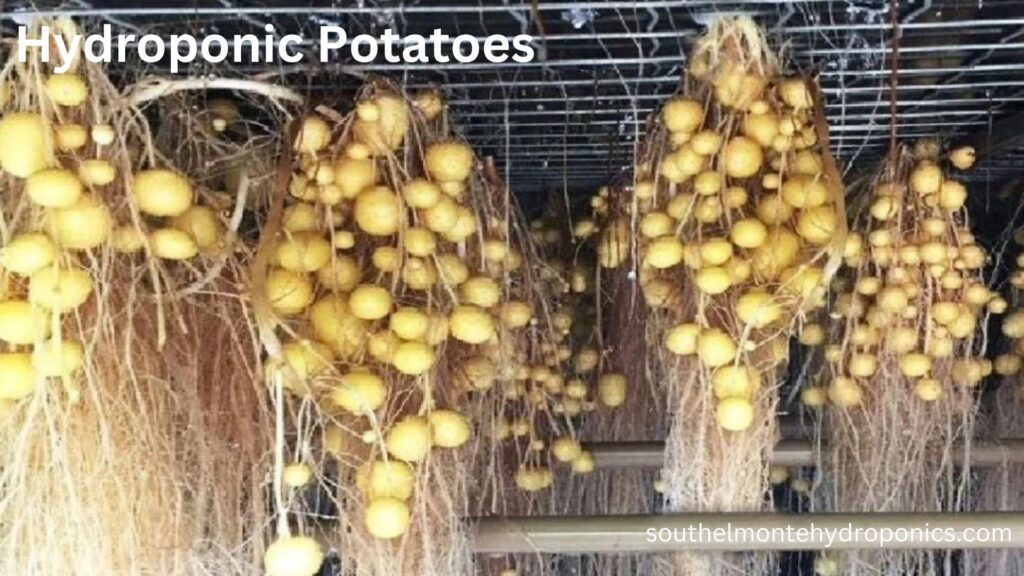
Next, you need to gather the required materials and tools for building the hydroponic structure. This includes containers or grow beds, a water reservoir, pumps, grow lights, air stones, and nutrient solution. These materials can be sourced from gardening supply stores or online retailers specializing in hydroponic equipment. It’s important to invest in high-quality materials to ensure the durability and efficiency of your hydroponic system.
In the next section, we will discuss in detail the process of creating the perfect nutrient solution for hydroponic potato cultivation, as well as the importance of providing optimal lighting and temperature conditions for the growth of your potato plants. Stay tuned for more valuable information on how to make the most of your hydroponic potato system.
Creating the Perfect Nutrient Solution for Hydroponic Potato Cultivation
Creating the perfect nutrient solution is a key aspect of hydroponic potato cultivation. Providing your potato plants with the right balance of nutrients is crucial for their growth and development. By understanding the specific nutritional requirements of potatoes and tailoring your nutrient solution accordingly, you can ensure optimal results.
Potatoes require a balanced combination of macronutrients and micronutrients for healthy growth. Macronutrients such as nitrogen, phosphorus, and potassium are essential for overall plant development, while micronutrients like iron, manganese, and zinc play important roles in various physiological processes. It is important to note that the nutrient requirements may vary at different stages of plant growth, so monitoring and adjusting the nutrient solution accordingly is crucial.
Additionally, different types of potatoes may have specific nutritional needs. For instance, russet potatoes may require additional potassium for optimal tuber formation, while red potatoes may benefit from higher phosphorus levels for improved root development. By researching the specific nutrient requirements of the potato variety you are cultivating, you can fine-tune your nutrient solution and promote healthy plant growth. In the next section, we will explore the methods and techniques for planting potato seeds or tubers in the hydroponic system to ensure successful propagation.
Planting the Potato Seeds or Tubers in the Hydroponic System
Successfully planting potato seeds or tubers in a hydroponic system is a crucial step in ensuring a bountiful harvest. To begin, carefully select healthy and disease-free potato seeds or tubers from a reputable source. It is essential to choose varieties that are suitable for hydroponic cultivation, such as the Yukon Gold or Red Pontiac.
Before planting, ensure that the hydroponic system has been thoroughly cleaned and sterilized to minimize the risk of pathogens. Depending on the type of hydroponic system used, there are various methods for planting potatoes. One common approach is to place the seeds or tubers on a tray or in net pots filled with a suitable growing medium. Another method involves suspending the tubers above the nutrient solution, using a raft or mesh. Whichever method is chosen, it is important to ensure that the roots have access to the nutrient solution while providing adequate support for the growing plants.
When planting, take care to space the seeds or tubers appropriately to allow for optimal growth. Typically, a spacing of 12 to 18 inches between plants is recommended to avoid overcrowding. Additionally, ensure that the planting depth is consistent, with the seeds or tubers buried approximately 4 to 6 inches below the surface of the growing medium or suspended above the nutrient solution. Providing consistency in planting depth will promote uniformity in root formation and subsequent growth.
This table provides a step-by-step guide to planting potato seeds or tubers in a hydroponic system, ensuring proper preparation, placement, and care for optimal growth:
| Step | Description |
|---|---|
| 1. Seed Selection | Choose healthy, disease-free potato tubers. |
| 2. Preparing Tubers | Cut larger tubers into smaller pieces with at least one “eye” or bud per piece. Ensure cuts are allowed to dry for a day to prevent rot. |
| 3. Fill Containers | Fill hydroponic containers with growing medium (e.g., perlite, coco coir) leaving enough space for tubers and root growth. |
| 4. Placing Tubers | Place seed potatoes or tuber pieces on the growing medium with the ‘eyes’ facing up, spacing them apart appropriately. |
| 5. Covering Tubers | Cover the tubers with additional growing medium, ensuring they are secured but not buried too deeply. |
| 6. Initial Watering | Water the medium thoroughly to settle it around the tubers, ensuring good contact for root development. |
| 7. System Startup | Start the hydroponic system, ensuring the nutrient solution circulates adequately. |
| 8. Light and Monitoring | Place the containers under appropriate lighting conditions and monitor regularly for growth, adjusting nutrient levels as needed. |
Once the planting is complete, it is important to maintain the optimal environmental conditions, including temperature, lighting, and nutrient levels, to support healthy seedling growth. Continual monitoring of these factors, as well as regular adjustment of pH and nutrient levels, will ensure that the potato plants thrive and reach their full potential. With proper care and attention, the planted potato seeds or tubers will soon sprout, marking the beginning of an exciting journey into hydroponic potato cultivation.
Providing Optimal Lighting and Temperature Conditions for Potato Growth
To ensure optimal growth and development of your hydroponic potato plants, it is important to provide them with the right lighting and temperature conditions. Light is essential for photosynthesis, the process through which plants convert light energy into chemical energy to fuel their growth. For potatoes, it is recommended to provide them with at least 10 to 12 hours of light per day. This can be achieved by using artificial lighting sources such as high-intensity discharge (HID) lamps or light-emitting diodes (LEDs) specifically designed for plant growth. These lights should be positioned at an appropriate distance from the plants to ensure uniform coverage and prevent the risk of burning.
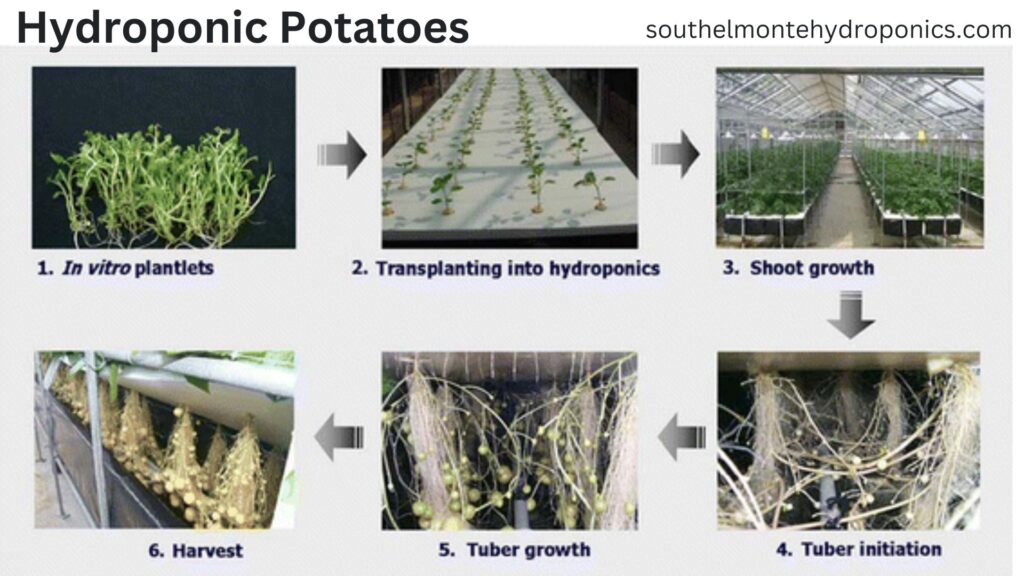
In terms of temperature, potatoes thrive best in a moderate range of 60 to 70 degrees Fahrenheit (15 to 21 degrees Celsius) during the day and slightly cooler temperatures of 50 to 60 degrees Fahrenheit (10 to 15 degrees Celsius) during the night. Maintaining a consistent temperature within this range is crucial for the overall health and productivity of your hydroponic potato plants. It is worth noting that extreme temperatures, either too high or too low, can have detrimental effects on their growth. Therefore, it is important to monitor and control the temperature in your hydroponic system using appropriate climate control devices such as heaters, air conditioners, or fans, depending on the specific requirements of your setup.
By providing optimal lighting and temperature conditions for your hydroponic potato plants, you will create an environment conducive to their growth and maximize their potential for yield. Next, we will explore the crucial aspect of monitoring and adjusting the pH and nutrient levels in your hydroponic system to ensure optimal nutrient uptake and plant health.
Monitoring and Adjusting the pH and Nutrient Levels in the Hydroponic System
Monitoring and adjusting the pH and nutrient levels in a hydroponic system is essential to ensuring optimal growth and development of potato plants. Maintaining the correct pH level is crucial as it directly affects the availability and uptake of nutrients by the plants. A pH that is too high or too low can lead to nutrient deficiencies or toxicities, resulting in stunted growth and poor potato yields.
To monitor the pH level in your hydroponic system, you can use a pH meter or pH test strips. These tools allow you to measure the acidity or alkalinity of the nutrient solution accurately. The optimal pH range for potato cultivation in hydroponics is typically between 5.5 and 6.5. Regular monitoring is recommended, and adjustments should be made if the pH deviates from the desired range.
To learn more about pH sensors, you can refer to this video:
Nutrient levels in the hydroponic system also require regular monitoring and adjustment to meet the specific needs of potato plants at different growth stages. Commercially available nutrient solutions formulated specifically for hydroponic potato cultivation can provide a balanced mix of essential elements required for healthy plant growth. These solutions typically include macronutrients such as nitrogen, phosphorous, and potassium, as well as micronutrients like iron, manganese, and zinc.
Regular monitoring of nutrient levels can be done using electrical conductivity (EC) meters, which measure the nutrient concentration in the water. Adjustments can be made by adding the appropriate amount of nutrient solution to maintain the desired EC level based on the growth stage of the potato plants.
By meticulously monitoring and adjusting the pH and nutrient levels in your hydroponic system, you can ensure that your potato plants receive the optimal balance of nutrients for robust growth and bountiful yields. Stay tuned for the next section, where we will explore effective strategies for managing pests and diseases in hydroponic potato cultivation.
Managing Pests and Diseases in Hydroponic Potato Cultivation
Pests and diseases can pose a significant threat to the success of your hydroponic potato cultivation. These unwanted intruders not only reduce the yield and quality of your crop but can also lead to the complete loss of your harvest if left unchecked. Therefore, it is crucial to have effective management strategies in place to protect your hydroponic potato plants.
One of the first steps in managing pests and diseases is regular monitoring. By closely observing your plants, you can identify any signs of infestation or infection early on. Look out for symptoms such as yellowing or wilting leaves, discoloration, spots, or unusual growth patterns. Additionally, regularly check the undersides of leaves, stems, and even the reservoir for any signs of pests like aphids, spider mites, or fungus gnats.
Once pests or diseases are detected, it is important to take immediate action to prevent their spread and minimize damage. Depending on the severity and type of problem, there are various control methods available. Natural predators like beneficial insects can be introduced to combat pests, while organic pest control products like insecticidal soaps or neem oil can be applied. For diseases, removing infected plants and improving air circulation can help reduce their impact. Always remember to avoid using chemical pesticides or fungicides, as they can harm both your plants and the environment.
By implementing these management practices, you can safeguard your hydroponic potato plants from potentially devastating pests and diseases. Regular monitoring and timely intervention are key to maintaining a healthy and thriving potato crop in your hydroponic system. Stay vigilant and proactive, and your harvest will flourish.
Pruning and Training the Potato Plants for Maximum Yield and Space Utilization
Once your potato plants start growing, it is important to implement proper pruning and training techniques to maximize their yield and optimize space utilization. Pruning involves the removal of unnecessary shoots, leaves, and branches, while training requires directing the plant’s growth in a specific manner.
One key benefit of pruning potato plants is that it promotes stronger and healthier growth. By removing excess foliage, you provide better air circulation and reduce the risk of diseases such as blight. Additionally, pruning allows the plants to redirect their energy towards developing larger and more abundant tubers, resulting in a higher potato yield.
When it comes to training, there are several methods to consider for potato plants. One popular technique is called “staking,” which involves installing stakes or trellises to support the plants as they grow. This method not only prevents the plants from bending or breaking under their own weight but also helps create vertical growing space, optimizing the use of limited garden space. Another training method is “topping” or “pinching,” where the top growth of the plant is trimmed to encourage stronger lateral branching and the development of more tubers.
Want to learn more about pruning? Here’s the video you might be looking for:
By incorporating these pruning and training practices into your hydroponic potato cultivation, you can enhance the overall yield and make the most efficient use of your growing space. Remember to tailor your pruning and training techniques to the specific variety of potato you are growing and regularly monitor the plants to ensure they are progressing as desired.
Harvesting and Enjoying the Fresh, Homegrown Hydroponic Potatoes.
Harvesting and enjoying the fresh, homegrown hydroponic potatoes is the culmination of your hard work and dedication to successfully cultivating these versatile tubers. As you watch your potato plants flourish and their foliage start to wither, it’s a promising sign that it’s time to harvest your bountiful crop.
When it comes to harvesting hydroponic potatoes, it’s crucial to understand the growth cycle of the plant. Typically, potatoes are ready for harvesting approximately 70 to 120 days after planting, depending on the variety and environmental conditions. To determine if the potatoes are ready for harvest, gently dig around the base of the plant and feel for the presence of mature tubers. The potatoes should have reached their desired size and have smooth, undamaged skins.
Once you’ve assessed their readiness, carefully unearth the potatoes, taking care not to damage the delicate tubers. Gently brush off any excess soil from the potatoes, but avoid washing them as this can reduce their storage life. After harvesting, allow the potatoes to cure for a few hours in a cool, dark, and well-ventilated area. This process helps the potatoes develop a more robust skin, promoting their longevity during storage. Finally, store your freshly harvested hydroponic potatoes in a cool, dry place, away from direct sunlight, to ensure their flavor and quality are preserved for your future culinary delights.
What is hydroponics?
Hydroponics is a method of cultivating plants without soil, where the plants receive essential nutrients through a water-based solution.
Can I grow potatoes using hydroponics?
Yes, potatoes can be grown successfully using hydroponics. It offers a controlled environment for optimal growth and higher yields.
What hydroponic system is best for growing potatoes?
There are various hydroponic systems suitable for potato cultivation. Some popular options include nutrient film technique (NFT), deep water culture (DWC), and vertical hydroponics.
Where should I set up my hydroponic potato system?
Choose a location that receives ample sunlight and is well-ventilated. An indoor space with artificial lighting or a greenhouse with controlled temperature and humidity can also be suitable.
What materials and tools do I need for hydroponic potato cultivation?
You will need containers or grow bags, a nutrient reservoir, an air pump, grow lights, pH and EC meters, a timer, growing media (such as perlite or coconut coir), and a nutrient solution.
How do I prepare the nutrient solution for hydroponic potato cultivation?
Follow the instructions provided with your hydroponic nutrient solution to mix the appropriate ratio of water and nutrients. Adjust the pH level as recommended for potatoes.
Can I plant potato seeds in the hydroponic system?
Yes, you can plant potato seeds in the hydroponic system. However, it is more common to use potato tubers or seed potatoes for hydroponic cultivation.
How do I manage pests and diseases in hydroponic potato cultivation?
Regularly inspect your plants for signs of pests or diseases. Use organic pest control methods, such as introducing beneficial insects or using neem oil, and maintain proper hygiene in your hydroponic system.
Should I prune and train the potato plants?
Yes, pruning and training the potato plants can promote better air circulation, prevent overcrowding, and maximize space utilization. Remove any excessive foliage and gently guide the plants as they grow.
When and how do I harvest hydroponic potatoes?
Harvest potatoes when the plants have finished flowering and the foliage starts to turn yellow. Gently dig out the potatoes, being careful not to damage them, and allow them to dry before storing or enjoying.

Pallavi Gupta is a burgeoning writer at SouthElMonteHydroponics, blending her passion for data analysis with a keen interest in biotechnology. Currently pursuing a Bachelor’s in Biotechnology at Amity University, Pallavi delves into the intricacies of life sciences while gaining hands-on experience in the exciting world of data analysis. Her unique background provides a fresh perspective on hydroponic farming, as she explores the intersection of biotechnology and sustainable agriculture. Through her writing, Pallavi aims to bridge the gap between data-driven insights and innovative farming practices, inspiring others to harness technology for a greener future.

